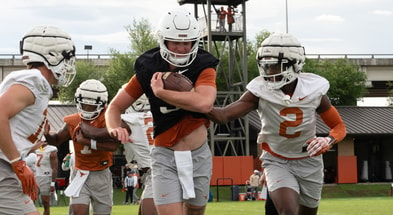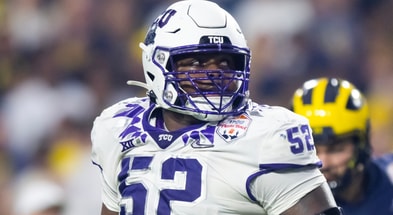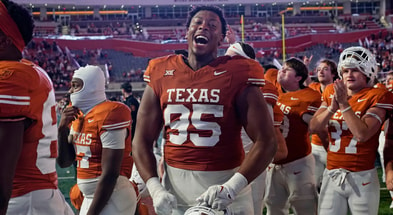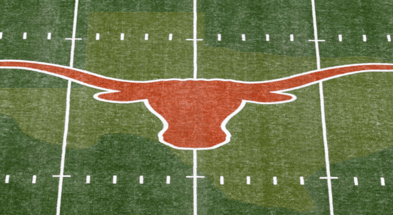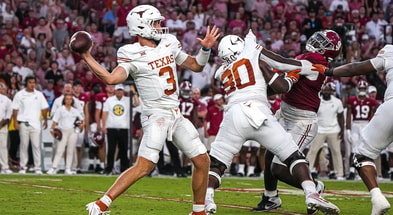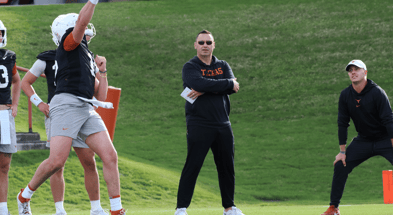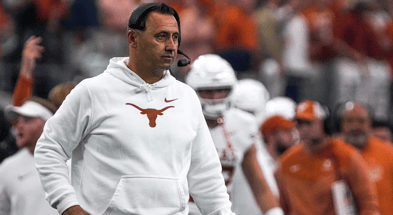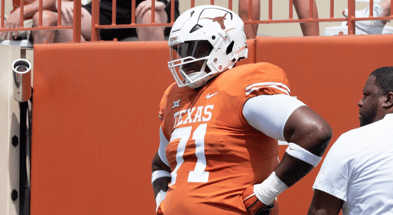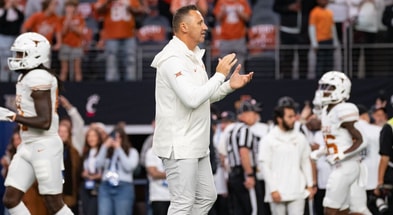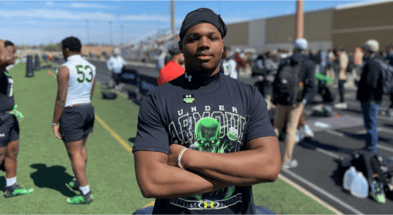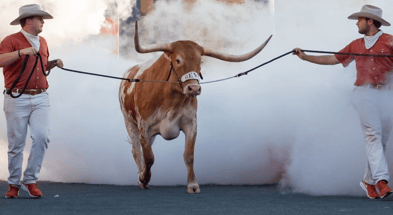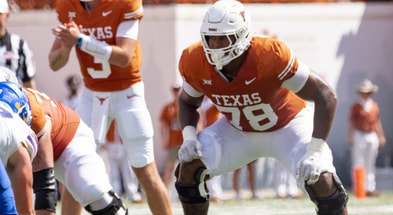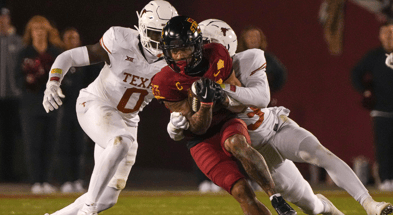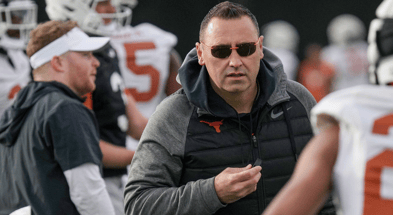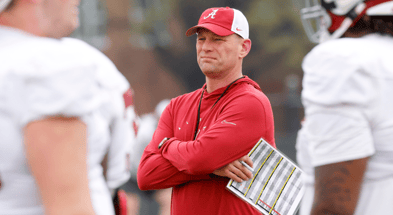Column: Steve Sarkisian wouldn't reveal Texas football's spring experiments, but here are four possibilities
Last week at the Touchdown Club of Houston’s Longhorn luncheon, Texas head coach Steve Sarkisian was available to the media before speaking to a crowd of donors, fans, and lettermen. I asked him a question, which led to this exchange.
[Get Inside Texas Plus for just $29.99 until 8/31/23!]
IT: “A lot coaches have spring as a time for experiments. Did you have any things that you see as a successful experiment on the field during your time in the spring?”
Sark: “Sure.”
IT: “What are some details about those experiments?”
Sark: “Not going to tell you. Good question though.”
Those types of responses are common when Sarkisian is asked about a topic he doesn’t want to go into detail about. I’ve seen it happen with questions about quarterback, a certain player’s progress, and other parts of the program he’d rather keep in house.
That’s fine, it’s within his right, but he did indicate there was some experimentation in the spring. Ahead of a massive year, the Longhorns’ last in the Big 12, here are a few I hope he and his coaching staff decided to check out during the 15 available spring practices.
Finding a new Wildcat quarterback
According to Pro Football Focus, Roschon Johnson had 15 snaps at quarterback all year in 2022. Two were against Alabama, three came against UTSA, and a season-high seven were versus Texas Tech. He would only have two more plays at Wildcat quarterback the rest of the year: one versus TCU and one versus Baylor.
The bulk of those snaps coming early in the season was a result of the injury to Quinn Ewers, the bumps and bruises that afflicted Hudson Card, and the lack of full health for Maalik Murphy during a developmental redshirt season. When three of the top four quarterbacks, and possibly the top three quarterbacks, are all nursing ailments, something had to be done.
Sarkisian has often said he doesn’t major in Wildcat, preferring to keep the specter of a play-action deep pass in his pocket. Even with Johnson’s passing background, that trade-off was lost whenever “the passer” as Sarkisian calls it was split out wide.
Johnson was uniquely cut out for Wildcat QB thanks to his background. In my mind, maintaining that package with Savion Red as the runner should be an option for Sarkisian in the coming year.
Red played what I like to call the “go win the game” position for Grand Prairie. Other Longhorns who played in this role include Jonathon Brooks at Hallettsville and Jordan Whittington at Cuero. His senior year with the Gophers, Red was 65-for-218 passing for 769 yards and eight touchdowns with two interceptions and had 148 carries for 1353 yards and 20 scores.
Sarkisian acknowledged during spring ball Red was proficient at running between the tackles thanks to his time as a Wildcat quarterback for Grand Prairie.
If Wildcat is something he wants to keep in his offense, then making Red the main character of those plays is a good decision.
Building a dime package
Ian Boyd wrote about this early last month and I think it’s something worth looking into. Texas hasn’t had a group of defensive backs with the current level of experience and talent since 2017, when the Longhorns based in dime with NFL talents Brandon Jones, DeShon Elliott, and Kris Boyd in the defensive backfield along with Jason Hall, Antwuan Davis, and Davante Davis.
This 2023 team doesn’t have the exact personnel needed to base in dime, which included two NFL D-linemen in Poona Ford and Charles Omenihu, plus uber-athletic linebackers like Malik Jefferson and Gary Johnson.
But the talent in the secondary should lend Pete Kwiatkowski to being comfortable putting six defensive backs on the field, especially with Jahdae Barron and Austin Jordan repping at Star plenty over the course of the spring. The number of corners available, plus experience in the safety room with Jerrin Thompson, Kitan Crawford, Jalen Catalon, and Michael Taaffe, should make it more feasible this year than in any other during the Sarkisian era.
Moving Ja’Tavion Sanders around
Last year, Ja’Tavion Sanders was on the field for 815 snaps. 602 of those were as an in-line tight end. 142 had Sanders in the slot. 59 snaps saw Sanders lined up wide. 12 had the former five-star in the backfield.
It’s my educated guess that many of those 59 snaps with Sanders out wide were setups for something I like to call the “Denton Ryan Fade.” Similarly, it could be identified as the “Gronk Fade.”
Sanders, thanks to his time spent as a wide receiver in the Raider offense, often aligned to the boundary. At Texas, this looked similar, with Sanders in the boundary and up to three wideouts on the opposite side of the O-line aligned to the field.
This tilts the defense in a way, especially in goal line scenarios, to where it has to choose whether to accept the mismatch Sanders presents or bring help over the top and sacrifice numbers to the field side.
This is something that can be utilized more often than 59 total snaps across 13 games, especially with Texas’ likely propensity for 11 personnel in 2023. The Longhorns shouldn’t sacrifice in-line opportunities for it considering Sanders is a quality blocker. But making defenses have to pick between respecting Sanders or risking a one-on-one with him in tight quarters is a smart strategy to employ. It would also offer some additional space to operate for players like AD Mitchell, Jordan Whittington, and Xavier Worthy.
More and more RPOs
The play-action pass may be what Texas fans think of when asked about Sarkisian’s offense, but one of the aspects of his system that hasn’t been as visible at Texas is the run-pass option. Much of that has to do with quarterback as it does with any other position. Plus, there was a diminishing return last year when it came to taking the ball out of Robinson or Johnson’s hands and into those of Quinn Ewers. Then, there was the part where Ewers had to make the right read during his first year in that offense.
The math has changed, obviously. Robinson and Johnson are gone, Ewers has reportedly developed crucial aspects of his game that would lend to more RPOs, and spreading the field in 11 personnel will open up more run-pass conflicts for new featured leader Whittington.
Sarkisian likes to say that the more things they can present to a defense, the more difficult they’ll be to stop. Adding more RPOs would be a welcome addition to an offense that last year did more to feature a run game than to open up passing options and reads for a redshirt freshman quarterback.

